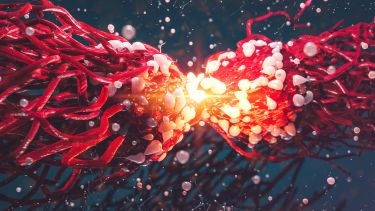Research
BIOPOL has identified four closely interdependent scientific work packages to address the translation of cell mechanics into biochemical signals and vice versa.

WP1: Mechanics of the actomyosin cortex
The actomyosin cortex is a main regulator of cellular mechanical properties. It plays an important role in regulating cell division, cell shape as well as cell migration and adhesion.
This work package addresses a novel role of the actomyosin cortex in shielding the fragile mitotic spindle from external mechanical perturbation in cell division as well as the role of the actomyosin cortex during embryonic development of C. elegans.
Work package 1 will focus specifically on the following objectives:
- The molecular mechanism of cortical cell stiffening during cell division.
- The role of torque forces in cell division and its implications on tissue symmetry.
- Actomyosin cortex architecture and cell surface mechanics during mitosis.
WP2: Mechanochemical mechanisms of cell polarisation
Cell polarisation, the asymmetric distribution of components (proteins, lipids, organelles etc) within a cell is crucial for many aspects of cellular behaviour including cell migration and tissue formation.
A special type of polarity so called “planar polarity” refers to the establishment of coordinated cell polarity in the plane of epithelial sheets and is important for tissue formation and function. This work package addresses the molecular and mechanical mechanisms of polarity.
Work package 2 will focus specifically on the following objectives:
- The mechanism of planar polarity in the Drosophila wing/Interplay of cell adhesion and cell shape.
- Mechanical regulation of planar polarity of epithelial cilia by fluid flow.
- Regulation of epithelial cell polarisation and ciliogenesis via cell confinement.
- Establishing cellular organ-on-a-chip models for high throughput drug screening.
WP3: Mechanosensing and endocytosis
The plasma membrane plays a crucial role for integrating multiple extrinsic signals (including soluble growth factors and cytokines, Extracellular matrix adhesion and mechanical forces).
It has become clear that physical properties of the plasma membrane contribute to virtually all membrane-related processes including endocytosis. Plasma membrane tension emerges as a main regulator of membrane dependent cell behaviour.
This work package focuses on the biophysical properties of the plasma membrane in mechanosensing and endocytosis mediated by caveolae-, clathrin- or clathrin-independent mechanisms.
Work package 3 will focus specifically on the following objectives:
- Caveolae mediated mechano-sensing and mechano-signalling.
- Interplay of plasma membrane tension and clathrin-dependent endocytosis and its relevance to cell motility.
- Interplay of plasma membrane tension and clathrin-independent endocytosis and its relevance for cell polarity.
- Quantification of plasma membrane tension using atomic force microscopy.
WP4: Mechano-transduction
In addition to biochemical knowledge of biochemical pathways, complete understanding of disease mechanisms also requires knowledge of underlying mechanotransduction mechanisms.
Consequently, this work package will focus on:
- Stromal biomechanics in breast cancer metastasis /role of caveolae.
- Mechanotransduction of the transcription factors YAP/TAZ in a Marfan syndrome mouse model.
- Mechanisms of micorglia/macrophage mechanosensing.
- Identification of small molecules to regulate caveolin expression in stromal cells to inhibit metastasis.
